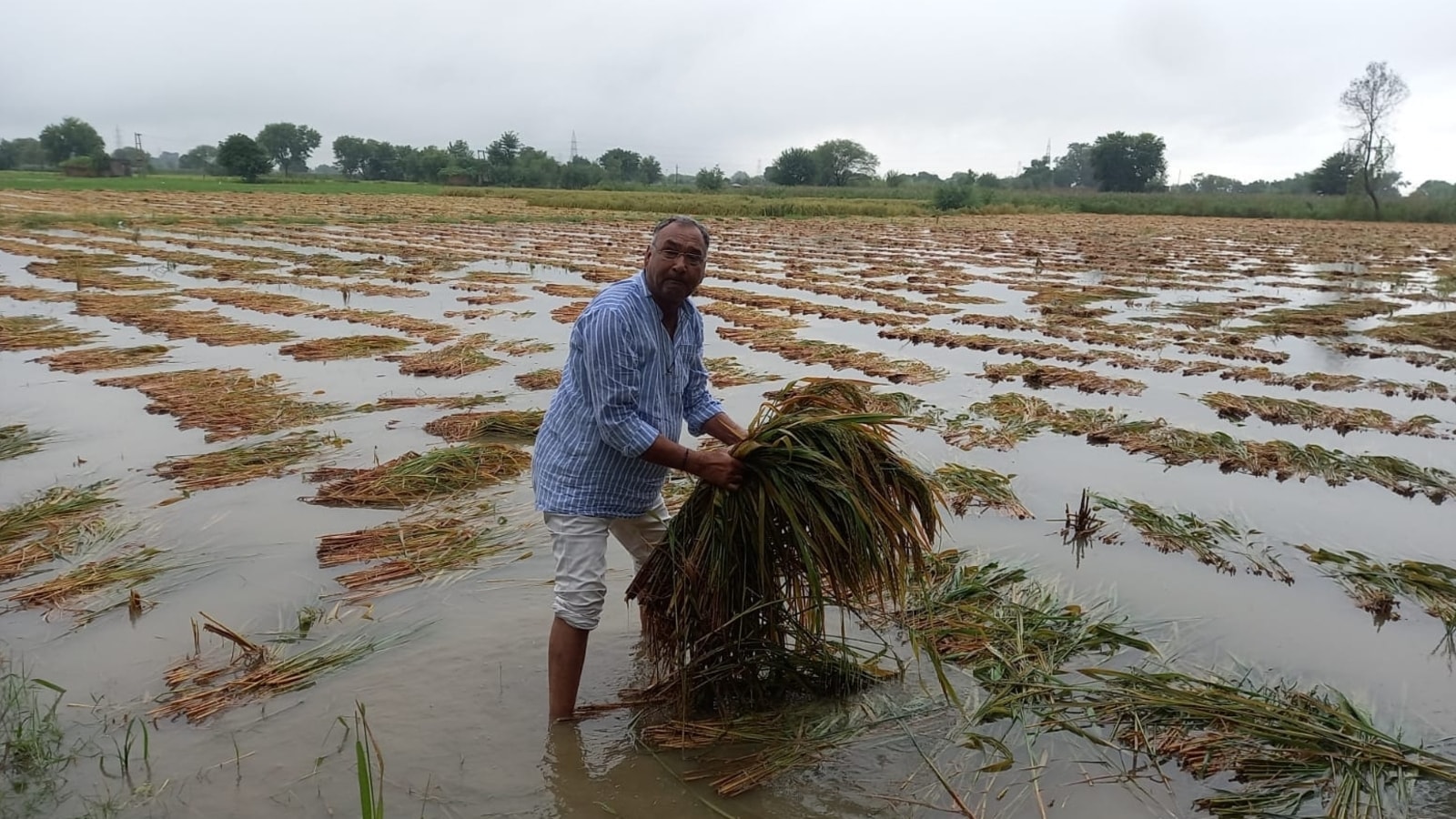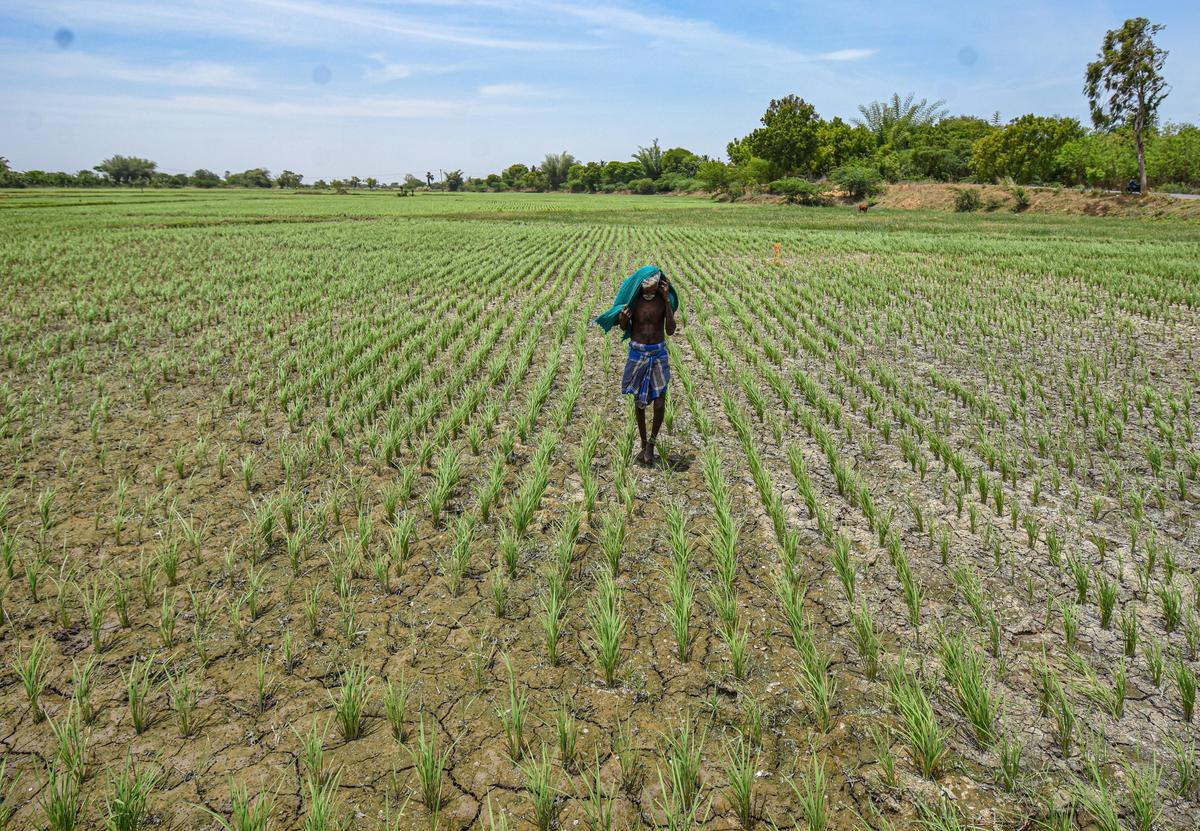India headed for driest August in over 100 years, summer crops at risk

India headed for driest August in over 100 years, summer crops at risk
India is currently on track to experience its driest August in over a century, as minimal rainfall is anticipated to persist across substantial regions of the country. This trend is attributed, in part, to the El Nino weather phenomenon. According to information provided by two officials from the weather department to Reuters on Friday, the scant rainfall projected for August is set to be the lowest since the commencement of recorded data in 1901.
This deficiency in August rainfall could potentially have adverse effects on the yields of crops sown during the summer season. Crops ranging from rice to soybeans could face reduced productivity, thereby potentially leading to an increase in prices and an overall surge in food inflation. The escalation of food inflation became apparent in July when it reached its highest level since January 2020.
The combination of limited rainfall and the impact of the El Nino weather pattern presents a substantial challenge to India’s agricultural sector. It jeopardizes crop outputs and raises concerns about the consequent economic repercussions. The anticipated implications on food inflation highlight the intricate interplay between meteorological conditions, agricultural productivity, and broader economic factors within the country. As India grapples with these challenges, the coming months will be critical in gauging the extent of the impact on both agricultural and economic fronts.

The monsoon season, a pivotal component for India’s $3-trillion economy, contributes nearly 70% of the essential rainfall required to irrigate agricultural fields, replenish reservoirs, and recharge aquifers. This reliance on the monsoon underscores its vital role in sustaining various sectors of the Indian economy, particularly agriculture, which plays a substantial role in the country’s economic landscape.
“The monsoon is not recovering as initially anticipated,” revealed a senior official from the India Meteorological Department (IMD), who preferred to remain anonymous due to the sensitive nature of the matter.
“Our projections indicate a substantial rainfall deficit across the southern, western, and central regions by the end of the month.”
As per current observations and extrapolations, India is poised to experience an average of less than 180 mm (7 inches) of rainfall in August. The implications of this deficit are becoming increasingly apparent, especially for the summer crops. The situation raises concerns about the yield and wellbeing of these crops.
During the initial 17 days of August, India has received a mere 90.7 mm (3.6 inches) of rainfall, which is nearly 40% below the usual average. The anticipated average for the entire month is 254.9 mm (10 inches), illustrating the significant deficit faced so far.
Earlier projections by the India Meteorological Department (IMD) had indicated an expected shortfall of up to 8% in August’s rainfall. The historical record for the lowest August rainfall dates back to 2005 when it amounted to 191.2 mm (7.5 inches).

While the monsoon rains are predicted to improve over the upcoming two weeks in the northeastern and certain central regions of the country, drier conditions persist in the northwestern and southern states. These regional disparities in rainfall distribution emphasize the intricate and variable nature of monsoon patterns across different parts of India.
The current situation has raised concerns about the impact on the agricultural sector, as well as the potential for increased food prices and overall inflation. As India grapples with this challenging weather pattern, monitoring the evolving monsoon conditions and their repercussions remains critical for assessing the future outlook for the country’s agricultural and economic landscape.
El Nino, a climatic phenomenon characterized by elevated sea surface temperatures that traditionally suppress rainfall across the Indian subcontinent, has reappeared in the tropical Pacific after a gap of seven years.
This year’s monsoon season has exhibited an uneven pattern, with June’s precipitation falling 10% below the historical average. However, the subsequent month, July, experienced a resurgence in rains, surpassing the average by 13%.
The significance of the summer monsoons cannot be overstated, given that nearly half of India’s agricultural lands lack proper irrigation infrastructure. These rains are pivotal as they coincide with the time when farmers typically commence planting a diverse range of crops such as rice, corn, cotton, soybeans, sugarcane, and peanuts, starting from June 1.

El Nino’s presence has historical implications for India’s monsoon patterns, with its warming effect in the Pacific contributing to variations in weather conditions across the Indian subcontinent. The resurgence of El Nino triggers concerns about the potential impact on monsoon rainfall, which could further influence crop yields and agricultural production.
The delicate balance between the monsoon’s distribution, the agricultural calendar, and the potential implications of El Nino underscores the complexity of India’s agricultural landscape and its sensitivity to climatic shifts. The erratic monsoon patterns and the return of El Nino necessitate vigilant monitoring as the country’s farmers and policymakers navigate these weather-related challenges.




